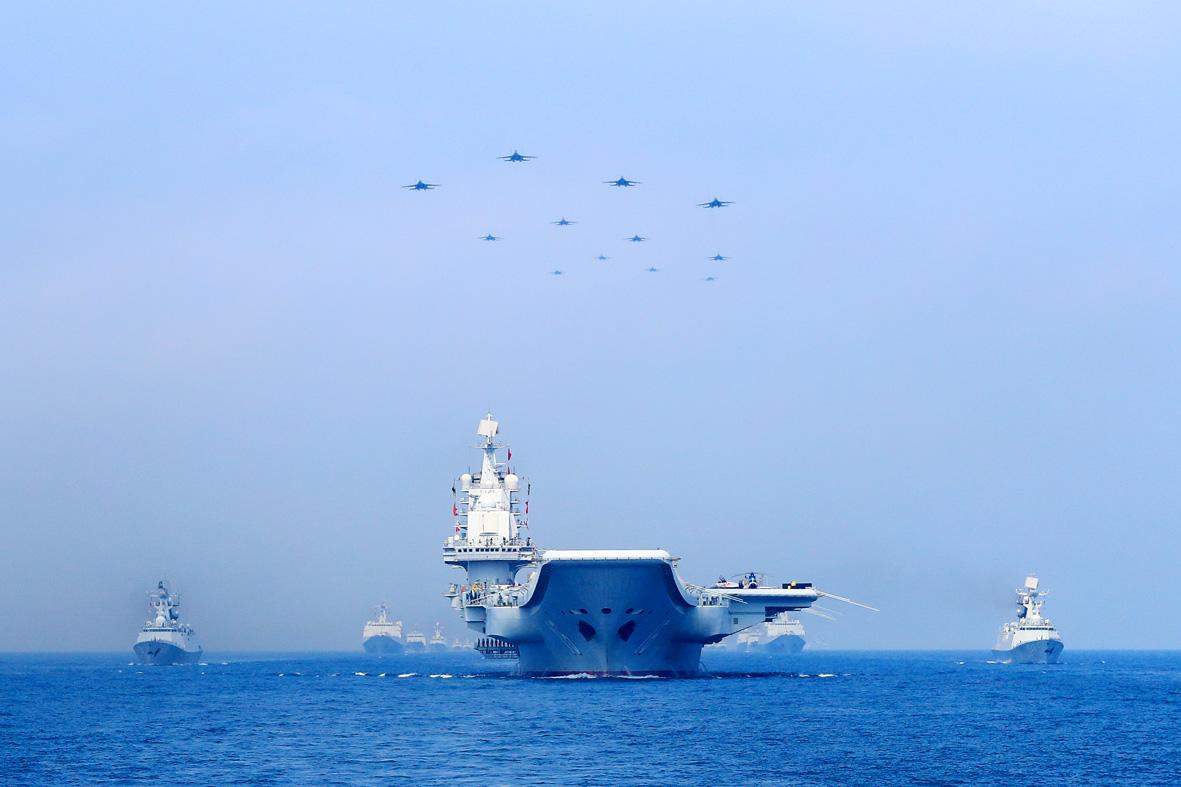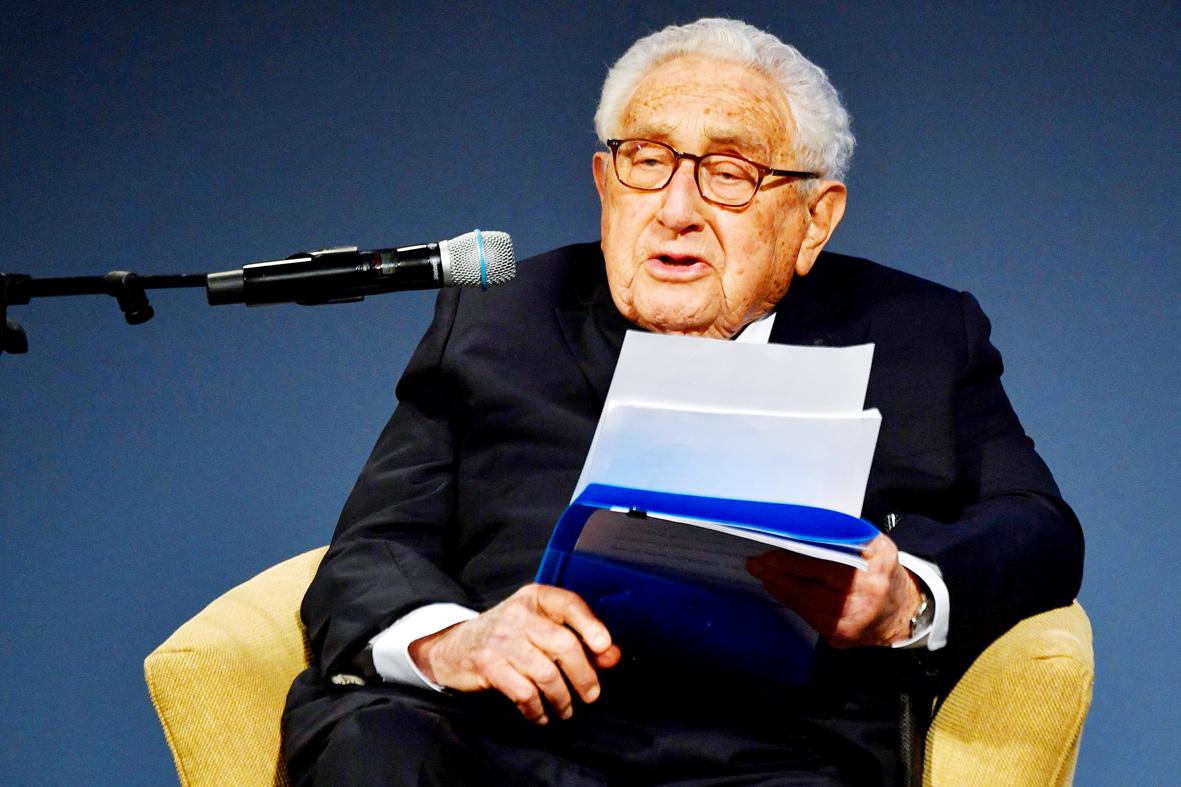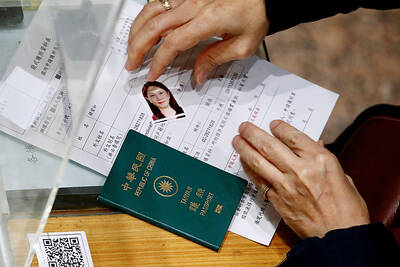Sifting through the last week or so of writing on Taiwan in the major media, the original title of this piece was going to be “Three Cheesy Pieces.” But in truth, the flow of effluent from the media exceeds my ability to represent it in a single pithy headline. It seems that the output of bad writing on Taiwan is equal to the square of the amount of attention our island nation receives.
TRIFECTA OF TURGIDITY
Leading off a terrible 10-day of prose on Taiwan was the The Economist’s piece, “The Most Dangerous Place on Earth” with Taiwan on the cover. The title was hilariously mocked on social media this week, and many commentators noted the complete lack of Taiwanese voices and perspective, as well as the piece’s absurd construction of Taiwan as a danger when the danger is China. But The Economist, despite its pretense to in-depth dead-white-male analysis, offered the same bubble world that such pieces always do.

Photo: Reuters
Another voice from the bubbly depths was Peter Beinart’s widely panned piece in the New York Times*, “Biden’s Taiwan Policy is Truly, Deeply, Reckless.” Beinart based the entire article on the absurd claim that US President Joe Biden is “making quiet, incremental, moves to establish official relations with Taiwan.” The Biden Administration has evidenced no such plans, of course. I have no idea how the paper’s editors let Beinart make such a transparently false claim, or why they did not source something sensible from the scores of competent writers and thinkers based here in Taiwan.
Completing this trifecta of turgidity was Charles Glaser. Like some inept but malign cicada, Glaser surfaces every five years or so with a think-piece arguing that the US should sell out Taiwan. Asia expert Bonnie Glaser, the Director of the Asia Program at the German Marshall Fund, observed on Twitter at his latest iteration of this ill-advised policy in Foreign Affairs.
“Ten years ago, my dearest friend, Nancy Bernkopf Tucker, and I wrote a rebuttal to Charles Glaser’s argument. His position hasn’t changed...” Not in 2011 (Foreign Affairs), 2015 (International Security) or this year (Foreign Affairs again).

Photo: AFP
I’m looking forward to dusting off my 2011 rebuttal of Charles Glaser in 2025. Probably won’t have to change a word.
Because it is so impoverished and so stereotyped, writing from this bubbleverse is shaped by a list of governing conventions that would make a romance novelist green with envy.
Taiwan, as numerous commentators observed in this latest go-round, is merely a static object with no voice of its own in this universe. Its views and perceptions are ignored even when the writers express sympathy for its people. That stance is mirrored in the way China is treated, as a sort of monster-cum-natural disaster, also with no real agency of its own, unable to change its policy. China’s absurd territorial claims go uninterrogated or are even presented sympathetically.
For example, The Economist tells us that “hostility to China has become the default in America,” apparently without cause — thus assigning both agency and irrationality to the US.
“Xi Jinping (習近平), China’s president, has not even begun to prepare his people for a war likely to inflict mass casualties and economic pain on all sides,” The Economist assures us, though as many of us have noted, Xi’s threats and imprecations are aimed at domestic audiences, designed to legitimate the coming war to them and prepare them for it. It is a mark of the media’s deep-seated groveling to power that The Economist and other media have no trouble using the term “dictator” to describe authoritarian leaders of other, smaller countries, but Xi is almost never identified that way.
In the bubbleverse only the US is assigned agency — an agency which can only be exercised in two ways, either provoking a war, or giving up. Typically, these writers summon individuals with longtime business interests in China, such as Henry Kissinger or Chas Freeman (who appears in Beinart’s piece), and then present them as experts with no mention of their China connections.
Japan nearly ceases to exist in this discourse. China’s logical next step after Taiwan is to move on the Japanese territories of Okinawa and the Senkaku Islands (known in Taiwan as the Diaoyutai Islands, 釣魚台), which it has long coveted. Taiwan is thus integral to Japan’s defense. A Chinese occupation of Taiwan brings China much closer to Japan and gives Chinese subs instant access to deep water. Hence, Japan is almost certain to move if China attacks Taiwan. Good luck, though, finding meaningful descriptions of what Japan might do in these pieces.
NO CONSEQUENCES FOR CHINA?
For example, last week brought us “The Coming Blockade of Taiwan by China?” by Simon Leitch in The National Interest. Leitch goes on for paragraphs about what China can do in a blockade, yet there is scant consideration of what Japan and the US might be doing to China, or how other states might react. Tellingly, the word “submarine,” which Japan and the US are strong in, never appears.
Indeed, removing consequences for China is another hallmark of this style of writing. According to Leitch, China can conduct a blockade of Taiwan that degenerates into a shooting war in the Taiwan Strait, and yet international shippers will continue (la-di-da!) to send ships to Chinese ports to feed that food-insecure empire — with no rise in shipping costs or insurance, to name only one small example. It is easy to exaggerate threats when you do not have to name even a single major negative consequence for the aggressor.
Generally, in this bubbleverse, Taiwan exists alone and its loss has no consequences for other states such as Philippines, Vietnam or India. The crucial context of Chinese expansionism around its borders, of which Taiwan is only one case, disappears. In this universe, once Taiwan becomes China’s, the threat ceases. Thus, selling out Taiwan to China has no consequences.
Recommendations from the bubbleverse always contain advice, which is usually abstract, vacuous or even silly. Deft diplomacy is always called for, yet concrete prescriptions for success are never provided. America must “work to re-establish an equilibrium across the Taiwan Strait” (Economist). How? America must “continue to make clear that China’s use of force to conquer Taiwan would violate international norms” (Charles Glaser). Whoa! I am sure China will draw back once they realize they are violating international norms.
Our 10-day wouldn’t be complete without an offering from Hugh White, perennial supporter of selling out Taiwan, who was in the Australian Financial Review the last week of April. Unable to get the US to sell out Taiwan, he has been reduced to arguing that Australia should sell out Taiwan and the US when war comes. There are no Taiwanese voices in his piece, of course, and no consequences for Australia should it betray both Taiwan and the US. Typical.
Whether hyping the threat or arguing that Taiwan should be sold out — the two arguments mirror each other, the latter completing the former — this bubbleverse is overwhelmingly testosterone-driven. There is something about stern warnings (the correct dead-white-guy adjective is “sober”) and sterner “this-hurts-me-more-than-you” sell-out arguments that attracts Real Men, who dispose of the fate of nations over brandy and cigars.
The lack of consequences is the inevitable result of the Great White Man style of writing: since consequences never happen to well-off white males, it is natural for them to construct worlds without consequences for the actors they invent.
Hyping the war threat, as many commentators pointed out, simply serves Beijing’s propaganda line that annexing Taiwan is inevitable and resistance is futile. It may make the Taiwanese resigned to their alleged fate, aiding Beijing, they note.
Yet, exaggerated depictions of the China threat have another pernicious consequence. Because the two arguments are related, each time China’s power is hyped, the writer is implicitly arguing in favor of selling out Taiwan.
The China threat? Sadly, one of its most powerful vectors remains western writers on the Taiwan-China issue.
* This article originally said that Peter Beinart’s story appeared in the Washington Post. Beinart's story appeared in the New York Times. The Taipei Times regrets the error.
Notes from Central Taiwan is a column written by long-term resident Michael Turton, who provides incisive commentary informed by three decades of living in and writing about his adoptive country.

April 14 to April 20 In March 1947, Sising Katadrepan urged the government to drop the “high mountain people” (高山族) designation for Indigenous Taiwanese and refer to them as “Taiwan people” (台灣族). He considered the term derogatory, arguing that it made them sound like animals. The Taiwan Provincial Government agreed to stop using the term, stating that Indigenous Taiwanese suffered all sorts of discrimination and oppression under the Japanese and were forced to live in the mountains as outsiders to society. Now, under the new regime, they would be seen as equals, thus they should be henceforth

Last week, the the National Immigration Agency (NIA) told the legislature that more than 10,000 naturalized Taiwanese citizens from the People’s Republic of China (PRC) risked having their citizenship revoked if they failed to provide proof that they had renounced their Chinese household registration within the next three months. Renunciation is required under the Act Governing Relations Between the People of the Taiwan Area and the Mainland Area (臺灣地區與大陸地區人民關係條例), as amended in 2004, though it was only a legal requirement after 2000. Prior to that, it had been only an administrative requirement since the Nationality Act (國籍法) was established in

Three big changes have transformed the landscape of Taiwan’s local patronage factions: Increasing Democratic Progressive Party (DPP) involvement, rising new factions and the Chinese Nationalist Party’s (KMT) significantly weakened control. GREEN FACTIONS It is said that “south of the Zhuoshui River (濁水溪), there is no blue-green divide,” meaning that from Yunlin County south there is no difference between KMT and DPP politicians. This is not always true, but there is more than a grain of truth to it. Traditionally, DPP factions are viewed as national entities, with their primary function to secure plum positions in the party and government. This is not unusual

US President Donald Trump’s bid to take back control of the Panama Canal has put his counterpart Jose Raul Mulino in a difficult position and revived fears in the Central American country that US military bases will return. After Trump vowed to reclaim the interoceanic waterway from Chinese influence, US Defense Secretary Pete Hegseth signed an agreement with the Mulino administration last week for the US to deploy troops in areas adjacent to the canal. For more than two decades, after handing over control of the strategically vital waterway to Panama in 1999 and dismantling the bases that protected it, Washington has